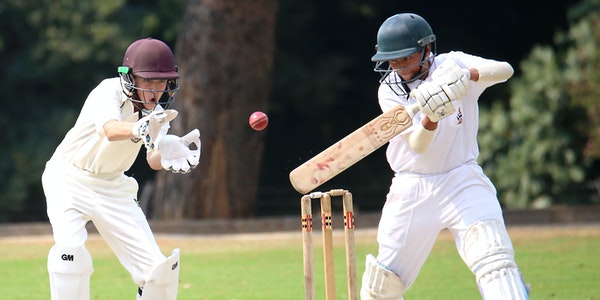Cricket, also known as wooden ball, is a (gentleman’s game), sportsmanship and (fairplay) sports. Cricket is a comprehensive exercise that trains the coordination of hands and eyes, and integrates upper limb movement control, skills and strength. The competition is a team competition. This game is one of the most watched sports in the world, and is the fourth largest game in the world after Olympic Games, FIFA World Cup, and Rugby World Cup. Cricket originated in the United Kingdom and prevails in Australia, New Zealand, Pakistan, India, Bangladesh, Nepal and other countries. India, Pakistan and Sri Lanka are the best countries for cricket in Asia. Especially in India, cricket is considered as the national ball.
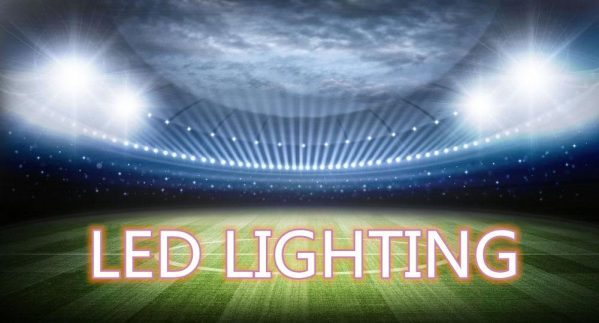
Cricket court size
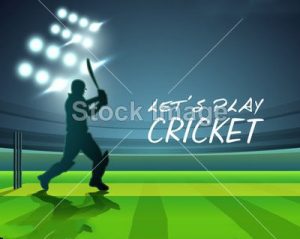 The size of the training field is a nearly circular field with a radius of not less than 55 meters. The training area is about half of the standard area. However, the training field must have a pitching area and a batting area, and its orientation, size, materials, and equipment must be consistent with the playing field, that is, 30 degrees to 60 degrees from the northwest to the southeast of the center of the cricket court (about -45) A fairway with a net length of 20.12 meters and a net width of 2.64 meters. There should be a 0.51 meter buffer zone on each side of the fairway. On both sides of the fairway are throwing (hitting) ball areas, which are surrounded by a boundary line (crease line) known as the “area line”, and each has a “three-poster gate” composed of three upright wooden posts and 2 horizontal beams. “. The two “three-posted gates” of the fairway are placed parallel to the sides of the fairway, 20.12 meters apart, and each group must be 22.86 cm wide. The erecting pillars must be 71.1 cm from the fairway surface and be a cylinder, and the diameter of each pillar must be between 3.81 and 3.49 cm. When the wood is placed on the top of the post, it cannot exceed 1.27 cm above the top of the post, and it will not interfere with the verticality of the post. The fairway is a rectangle with a length of 22 yards / 20.12 meters and a width of 10 feet / 3.05 meters. The head and tail ends are pitching white lines, while the sides are imaginary lines. Imagine that the centerline is connected to the center pillar in the court. See rules 8.1 (width and fairway) and 9.2 (The bowling crease).
The size of the training field is a nearly circular field with a radius of not less than 55 meters. The training area is about half of the standard area. However, the training field must have a pitching area and a batting area, and its orientation, size, materials, and equipment must be consistent with the playing field, that is, 30 degrees to 60 degrees from the northwest to the southeast of the center of the cricket court (about -45) A fairway with a net length of 20.12 meters and a net width of 2.64 meters. There should be a 0.51 meter buffer zone on each side of the fairway. On both sides of the fairway are throwing (hitting) ball areas, which are surrounded by a boundary line (crease line) known as the “area line”, and each has a “three-poster gate” composed of three upright wooden posts and 2 horizontal beams. “. The two “three-posted gates” of the fairway are placed parallel to the sides of the fairway, 20.12 meters apart, and each group must be 22.86 cm wide. The erecting pillars must be 71.1 cm from the fairway surface and be a cylinder, and the diameter of each pillar must be between 3.81 and 3.49 cm. When the wood is placed on the top of the post, it cannot exceed 1.27 cm above the top of the post, and it will not interfere with the verticality of the post. The fairway is a rectangle with a length of 22 yards / 20.12 meters and a width of 10 feet / 3.05 meters. The head and tail ends are pitching white lines, while the sides are imaginary lines. Imagine that the centerline is connected to the center pillar in the court. See rules 8.1 (width and fairway) and 9.2 (The bowling crease).
The importance of cricket court lighting
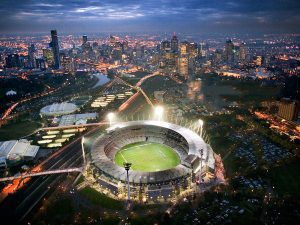 Through the actual measurement and investigation of a large number of stadium lighting, a large amount of data including lighting level, lighting quality, lighting design and lighting electricity were obtained, showing that the stadium lighting design and lighting energy saving are of great significance. Conserving resources and protecting the environment is a major long-term policy of our country and an important subject of worldwide concern. According to statistics of relevant data, electricity consumption in the process of use accounts for 14%, of which only electricity for lighting accounts for about 12% of the total electricity consumption in society. To this end, the central government has proposed the construction of “resource-saving”, including green lighting and building energy saving, which shows the importance of building energy saving and lighting energy saving today. In the design of the court, to enable the athlete to accurately judge the ball path, the height and landing point are first of all to make the most of natural light. The effect of natural light is the best. Of course, it is necessary to prevent glare and not allow direct light or reflection. In the eyes, it is followed by increasing the stability of the illuminance and the uniformity of the distribution. This is not only important for the athletes to achieve excellent results, but also for the accurate judgment of the referees and the appreciation of the audience.
Through the actual measurement and investigation of a large number of stadium lighting, a large amount of data including lighting level, lighting quality, lighting design and lighting electricity were obtained, showing that the stadium lighting design and lighting energy saving are of great significance. Conserving resources and protecting the environment is a major long-term policy of our country and an important subject of worldwide concern. According to statistics of relevant data, electricity consumption in the process of use accounts for 14%, of which only electricity for lighting accounts for about 12% of the total electricity consumption in society. To this end, the central government has proposed the construction of “resource-saving”, including green lighting and building energy saving, which shows the importance of building energy saving and lighting energy saving today. In the design of the court, to enable the athlete to accurately judge the ball path, the height and landing point are first of all to make the most of natural light. The effect of natural light is the best. Of course, it is necessary to prevent glare and not allow direct light or reflection. In the eyes, it is followed by increasing the stability of the illuminance and the uniformity of the distribution. This is not only important for the athletes to achieve excellent results, but also for the accurate judgment of the referees and the appreciation of the audience.
Key points of cricket court illumination design
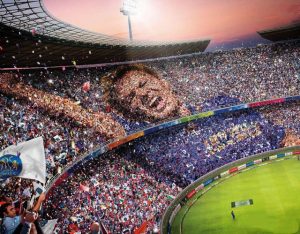 1) Illumination: In addition to the reasonable illumination, athletes can play normally and the referees can make accurate judgments. They can also ensure that the audience at the scene and the TV can watch the game comfortably. Different sports also require different illumination. The illumination required for sporting events, business activities, etc. also varies.
1) Illumination: In addition to the reasonable illumination, athletes can play normally and the referees can make accurate judgments. They can also ensure that the audience at the scene and the TV can watch the game comfortably. Different sports also require different illumination. The illumination required for sporting events, business activities, etc. also varies.
2) Illumination uniformity: The ratio of the minimum illumination value to the maximum illumination value is the illumination uniformity. Whether it is an indoor stadium or an outdoor stadium, the requirements for lighting are very high. Take basketball venues as an example, the intermediate venues tend to gather more light, but areas with excessive light often produce glare, and the rebound area is often illuminated The brightness will be weak, ensuring the uniformity of the lighting of the overall venue, which plays a vital role in the level of the athletes.
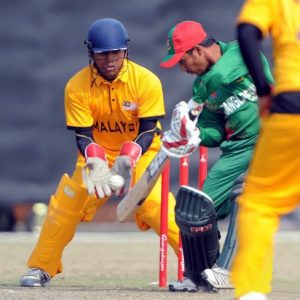 3) Glare: Glare refers to the visual conditions that cause visual discomfort and reduce the visibility of objects due to inappropriate brightness distribution in the field of view, or extreme brightness contrast in space or time. A bright feeling that the human eye cannot adapt to in the field of vision will have a great impact on athletes, especially ball games, and athletes cannot accurately determine the ball drop point. The intelligent lighting system can realize the training and entertainment mode, amateur competition mode, professional competition mode, TV broadcasting mode, and can also be linked with other subsystems of intelligent buildings. The control operation is simple and can be controlled on the computer and mobile terminal. In order to ensure uniform illumination at all angles and prevent indoor glare, the elevation angle of the lowest point of the stadium’s light projection to the lamp must be greater than 45 °. The audience caused direct light, and now stadiums will use computers to calculate the light spot to ensure the uniformity and reasonable distribution of light. Indoor glare can also be caused by different floor materials or water reflections from swimming venues, so grilles or baffles can be added to the lamps to reduce glare.
3) Glare: Glare refers to the visual conditions that cause visual discomfort and reduce the visibility of objects due to inappropriate brightness distribution in the field of view, or extreme brightness contrast in space or time. A bright feeling that the human eye cannot adapt to in the field of vision will have a great impact on athletes, especially ball games, and athletes cannot accurately determine the ball drop point. The intelligent lighting system can realize the training and entertainment mode, amateur competition mode, professional competition mode, TV broadcasting mode, and can also be linked with other subsystems of intelligent buildings. The control operation is simple and can be controlled on the computer and mobile terminal. In order to ensure uniform illumination at all angles and prevent indoor glare, the elevation angle of the lowest point of the stadium’s light projection to the lamp must be greater than 45 °. The audience caused direct light, and now stadiums will use computers to calculate the light spot to ensure the uniformity and reasonable distribution of light. Indoor glare can also be caused by different floor materials or water reflections from swimming venues, so grilles or baffles can be added to the lamps to reduce glare.
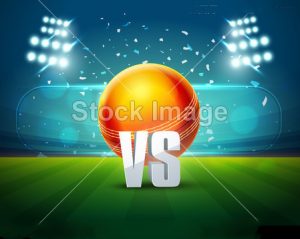 4) Light distribution: The light distribution of the stadium is scattered and is mainly divided into the viewing area and the competition area. But because the athlete’s range of motion is not only a flat ground, the vertical lighting has a greater impact on the athlete. Because of the reasonable control of the light illuminance, it is also necessary to rationally plan the light distribution position to ensure the lighting requirements of the auditorium on the premise of ensuring the athletes’ competition. Our lights are comparable to the special lights for the training halls of national teams. The lights are not dazzling, the light is soft, the uniformity is high, and the color temperature is closer to natural light. It has a great impact, especially for ball games, and athletes cannot accurately determine the ball drop point.
4) Light distribution: The light distribution of the stadium is scattered and is mainly divided into the viewing area and the competition area. But because the athlete’s range of motion is not only a flat ground, the vertical lighting has a greater impact on the athlete. Because of the reasonable control of the light illuminance, it is also necessary to rationally plan the light distribution position to ensure the lighting requirements of the auditorium on the premise of ensuring the athletes’ competition. Our lights are comparable to the special lights for the training halls of national teams. The lights are not dazzling, the light is soft, the uniformity is high, and the color temperature is closer to natural light. It has a great impact, especially for ball games, and athletes cannot accurately determine the ball drop point.
Design of light control system used in cricket court
In order to give athletes and spectators a special visual experience, customized external dynamic lighting is integrated in the “smart stadium” upgrade project. High-end lighting design Facade lighting design makes the entire stadium the closest to natural lighting. The dynamic facade lighting device is controlled by the DMX control system, which includes a light control engine and controls lighting through a fiber optic network that connects all intelligent lighting. The custom touch screen interface controlled by the central server can be used to select different lighting scenes. As a fashionable global stadium, our product installation system is one of the latest technologies in the world. Here, the interior and surroundings of the stadium are best illuminated. All personnel can fully immerse themselves in the game and get a unique experience.
Features of cricket court lighting construction.
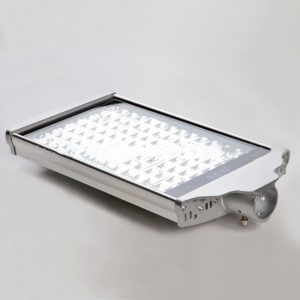 Stadium lighting construction, using Philips Yaming light source, to ensure the stability of the lamps, safe and reliable work, can make the lights achieve the best working condition, suitable for use in stadiums, outdoor courts and other places. Tennis court lighting system in the stadium lighting scheme, 1 There are 8 sets of standard tennis court lights for night or need lighting. Each set has a lamp base. The court lighting system includes lamp-based facilities, lamps, lamp heads, and power distribution systems. Stadium lighting construction, lamp illumination should be based on different uses of the court . Experience tells us that the average illuminance of each stadium light should be more than 600 lux.
Stadium lighting construction, using Philips Yaming light source, to ensure the stability of the lamps, safe and reliable work, can make the lights achieve the best working condition, suitable for use in stadiums, outdoor courts and other places. Tennis court lighting system in the stadium lighting scheme, 1 There are 8 sets of standard tennis court lights for night or need lighting. Each set has a lamp base. The court lighting system includes lamp-based facilities, lamps, lamp heads, and power distribution systems. Stadium lighting construction, lamp illumination should be based on different uses of the court . Experience tells us that the average illuminance of each stadium light should be more than 600 lux.
Professional LED lights for cricket court vs traditional high pressure sodium lights
LED stadium lighting, some stadiums are still mainly metal halide lights, these two types of lights have a glare problem, especially when receiving high hanging ball, the lights will always be dazzling, so that players can not see the ball The direction of the light of the stadium’s lighting and the depression angle of the lamp not only affects the vertical illuminance, but also may have a greater glare effect on athletes, spectators and referees. For the lighting design of the stadium, the aiming direction of the lamp should be selected. In addition, the ratio of the main camera to the light coming from the other side should be controlled within a certain range, and the most important point of lighting is to set it in the center of the football field and in the restricted area.
Environmental protection:
The high-pressure sodium lamp contains mercury agent, and it is a pollution light source with glare, ultraviolet radiation and flicker. The LED street light source is LED, which is a green light source.
In terms of energy saving:
The color temperature of the LED light source is 4500-6500K, the color rendering index is above 80, and the color is closer to natural light. Compared with high-pressure sodium lamps, the light intensity required by the human eye to feel the same brightness is much lower. The lighting effect is equivalent to a 400-watt high-pressure sodium lamp.
long life:
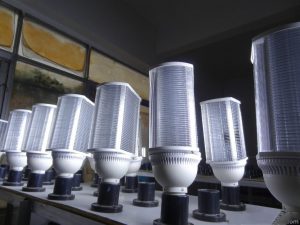 For high-pressure sodium lamps, domestic products have a short life span due to quality and technical problems, generally less than 3000 hours, and imported ones are the best, reaching 3000-4000 hours. The theoretical life of LED exceeds 100,000 hours, and the actual service life of LED lights is more than 50,000 hours, which is equivalent to 15 times the life of the best high pressure sodium lamp in circulation today, that is, the high pressure sodium lamp is replaced more than 15 times before the LED lamp is replaced- Secondly, the cost of replacing the light source is low, and the maintenance cost is the most obvious comparison with the inconvenience caused by it. LED lights are even more advantageous.
For high-pressure sodium lamps, domestic products have a short life span due to quality and technical problems, generally less than 3000 hours, and imported ones are the best, reaching 3000-4000 hours. The theoretical life of LED exceeds 100,000 hours, and the actual service life of LED lights is more than 50,000 hours, which is equivalent to 15 times the life of the best high pressure sodium lamp in circulation today, that is, the high pressure sodium lamp is replaced more than 15 times before the LED lamp is replaced- Secondly, the cost of replacing the light source is low, and the maintenance cost is the most obvious comparison with the inconvenience caused by it. LED lights are even more advantageous.
Light decay is small:
The light decay of high-pressure sodium lamp is as high as 60% in one year; relatively speaking, the LED street lamp has a light decay of 30% in 10 years.
Good color rendering:
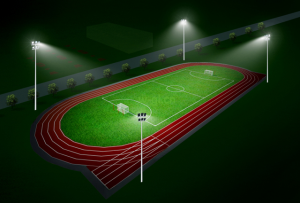 The high-pressure sodium lamp emits yellow color, and its color temperature and imaging index are relatively low. The color rendering index of sunlight is 100, while the color rendering index of high-pressure sodium lamps is only about 20 (yellow light), so everything we see under the sodium lamps is yellow. The color temperature of LED street lights can be flexibly selected between 4000-7000K, the color rendering index can reach more than 80, and the luminous color is closer to natural light.
The high-pressure sodium lamp emits yellow color, and its color temperature and imaging index are relatively low. The color rendering index of sunlight is 100, while the color rendering index of high-pressure sodium lamps is only about 20 (yellow light), so everything we see under the sodium lamps is yellow. The color temperature of LED street lights can be flexibly selected between 4000-7000K, the color rendering index can reach more than 80, and the luminous color is closer to natural light.
High light efficiency utilization:
The structure of the bulb of the high-pressure sodium lamp determines the low utilization rate of the light source of the lamp, only about 40%, and the luminous angle is 360 °; most of it must be reflected by the reflector before it can reach the designated area. LED light source utilization rate is high, about 90%, LED light emitting angle and lighting angle can be kept the same, the LED street light can be directly irradiated to the designated area, the light source utilization rate is high. Start-up time: The high-pressure sodium lamp bulb takes a long time to start, and it needs to have a fixed time interval when it starts again. The high-pressure sodium lamp can reach normal brightness only when it is powered on for about 5-10 minutes, and the time interval for restarting is generally greater than 5 minutes. LED street lights will not have the problem of startup delay, can be turned on at any time, and work at any time, which can realize intelligent energy-saving control very conveniently.
Effectively reduce glare:
At present, the light line is scattered by 180 degrees. Hengying super high-power LED lamp uses a unique secondary optical design to make the light of the lamp project to the ground to form a rectangular spot. There is almost no scattering and glare, and it does not cause light pollution around the stadium. And the light field area has a uniform brightness distribution and soft light, which effectively reduces eye fatigue.
No strobe:
The high-power LED lamp adopts DC power supply, and the unique constant current device makes the high-power LED lamp emit light constantly and completely without flicker.
Safety:
LED lighting is a solid-state lighting that is effective against shock and explosion. Excellent heat dissipation performance: Low thermal resistance structure design and good heat dissipation design ensure that the junction temperature of the LED PN junction does not exceed 75C, thereby ensuring the luminous efficiency and working life of the LED.
Cost comparison of using LED lights and traditional lamps in cricket court
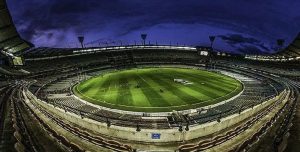 Use of light source and light source effect: LED lamp 100 lumens. 70 lumens / watt of fluorescent light. 15 lumens for ordinary light bulbs. High-pressure sodium lamp 100 lumens. Power efficiency: 85% of LED lights. 70% fluorescent light. High pressure sodium lamp 50%. Lighting efficiency: 90% of LED lights. 75% fluorescent light. 60% of ordinary light bulbs. High pressure sodium lamp 60%. Life: 50000 hours of LED lights. 6000 hours of fluorescent light. 2000 hours for ordinary light bulbs. High pressure sodium lamp for 3000 hours. LED calculation: 100.0.85, 05 = 76.5 lumens. Fluorescent lamp calculation: 100.0.85, 05 = 76.5 lumens. Ordinary light bulb calculation: 15 * 0.6 = 9.0 lumens. High pressure sodium lamp calculation: 100 * 0.5 * 0.6 = 30 lumens / watt. Operating power consumption cost: Based on lighting for 10 hours a day, the unit price of electricity is 1 yuan / degree. The power consumption of the two lamps for one year is as follows: The power consumption of each high-pressure sodium lamp for one year is: 450W * (1 + 10% ) * 10 hours * 365 days 1 00KW / hour = 1806.75 kWh The electricity cost is: 1806.75 kWh * 1.0 yuan / kWh = 1806.75 yuan Each year the power consumption of each LED lamp is: 160W * 10 hours / day * 365 days / At 1KW = 584 kWh the electricity charge is: 584 kWh * 1.0 yuan kWh = 584. It can be seen from the above comparison that LED lamps have the advantage of energy saving when replacing traditional lamp electricity costs. Therefore, the use of LED lights for cricket court lighting will be the most cost-effective lighting cost. The current life of high-pressure sodium lamp light sources in the market can reach 15,000-20000 hours under the working environment of standard voltage. Due to the large fluctuation of the actual working voltage compared to the standard voltage, the actual service life of the light source is less than 6000 hours (about 1.5 years), the average service life of the ballast is about 2.5 years-3 years: while the single LED lamp has a long life and low power, the LED can be used continuously for 50,000 hours, the service life is up to 10 years, and it does not need to be replaced for life. The light source and the traditional lamp are replaced once, and the maintenance cost is high and it will cause a lot of inconvenience.
Use of light source and light source effect: LED lamp 100 lumens. 70 lumens / watt of fluorescent light. 15 lumens for ordinary light bulbs. High-pressure sodium lamp 100 lumens. Power efficiency: 85% of LED lights. 70% fluorescent light. High pressure sodium lamp 50%. Lighting efficiency: 90% of LED lights. 75% fluorescent light. 60% of ordinary light bulbs. High pressure sodium lamp 60%. Life: 50000 hours of LED lights. 6000 hours of fluorescent light. 2000 hours for ordinary light bulbs. High pressure sodium lamp for 3000 hours. LED calculation: 100.0.85, 05 = 76.5 lumens. Fluorescent lamp calculation: 100.0.85, 05 = 76.5 lumens. Ordinary light bulb calculation: 15 * 0.6 = 9.0 lumens. High pressure sodium lamp calculation: 100 * 0.5 * 0.6 = 30 lumens / watt. Operating power consumption cost: Based on lighting for 10 hours a day, the unit price of electricity is 1 yuan / degree. The power consumption of the two lamps for one year is as follows: The power consumption of each high-pressure sodium lamp for one year is: 450W * (1 + 10% ) * 10 hours * 365 days 1 00KW / hour = 1806.75 kWh The electricity cost is: 1806.75 kWh * 1.0 yuan / kWh = 1806.75 yuan Each year the power consumption of each LED lamp is: 160W * 10 hours / day * 365 days / At 1KW = 584 kWh the electricity charge is: 584 kWh * 1.0 yuan kWh = 584. It can be seen from the above comparison that LED lamps have the advantage of energy saving when replacing traditional lamp electricity costs. Therefore, the use of LED lights for cricket court lighting will be the most cost-effective lighting cost. The current life of high-pressure sodium lamp light sources in the market can reach 15,000-20000 hours under the working environment of standard voltage. Due to the large fluctuation of the actual working voltage compared to the standard voltage, the actual service life of the light source is less than 6000 hours (about 1.5 years), the average service life of the ballast is about 2.5 years-3 years: while the single LED lamp has a long life and low power, the LED can be used continuously for 50,000 hours, the service life is up to 10 years, and it does not need to be replaced for life. The light source and the traditional lamp are replaced once, and the maintenance cost is high and it will cause a lot of inconvenience.
The future of sports lighting-LED smart lighting
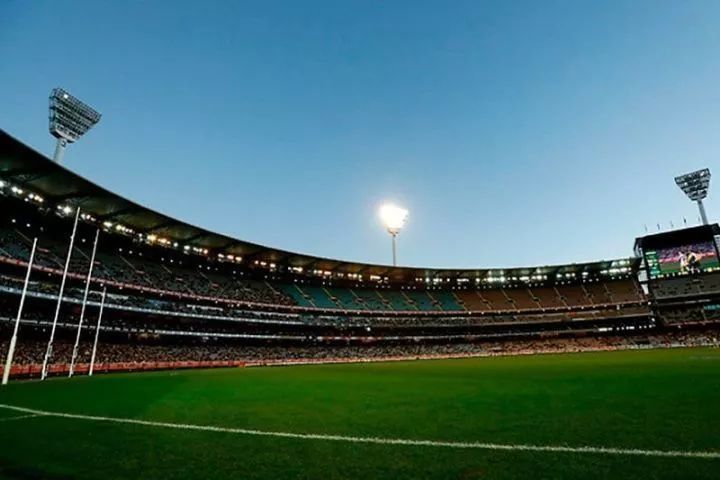 With the rapid development of sports, traditional lamps and lighting methods have been unable to meet our needs. Under such a background, LED sports lighting has begun to enter the stage of history, becoming the darling of the times and used by many stadiums !! The intelligent lighting derived from LED has made a considerable contribution to the development of sports lighting! Compared with traditional lighting, LED lighting has the following major characteristics: very low operating voltage; small operating current; good shock and vibration resistance, high reliability, and long life; light can be easily modulated by modulating the strength of the current passed through the modulation The strength and weakness of sports lighting systems can become the control nodes of sports lighting systems, which has greatly changed the operation / business model of sports lighting systems and services, and thus greatly promoted the progress of sustainable development.
With the rapid development of sports, traditional lamps and lighting methods have been unable to meet our needs. Under such a background, LED sports lighting has begun to enter the stage of history, becoming the darling of the times and used by many stadiums !! The intelligent lighting derived from LED has made a considerable contribution to the development of sports lighting! Compared with traditional lighting, LED lighting has the following major characteristics: very low operating voltage; small operating current; good shock and vibration resistance, high reliability, and long life; light can be easily modulated by modulating the strength of the current passed through the modulation The strength and weakness of sports lighting systems can become the control nodes of sports lighting systems, which has greatly changed the operation / business model of sports lighting systems and services, and thus greatly promoted the progress of sustainable development.

